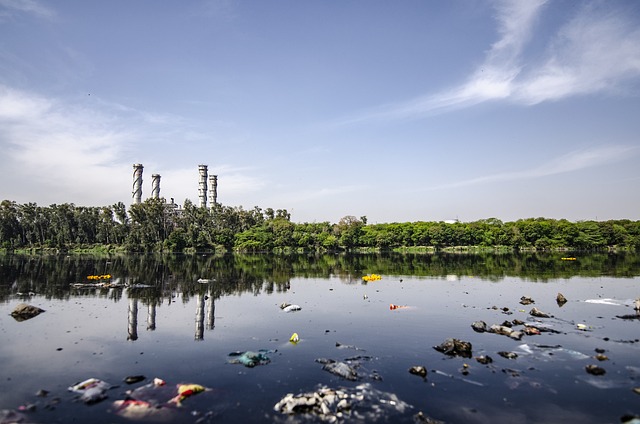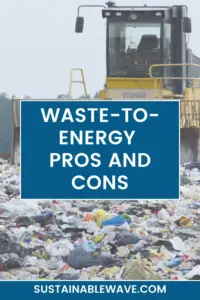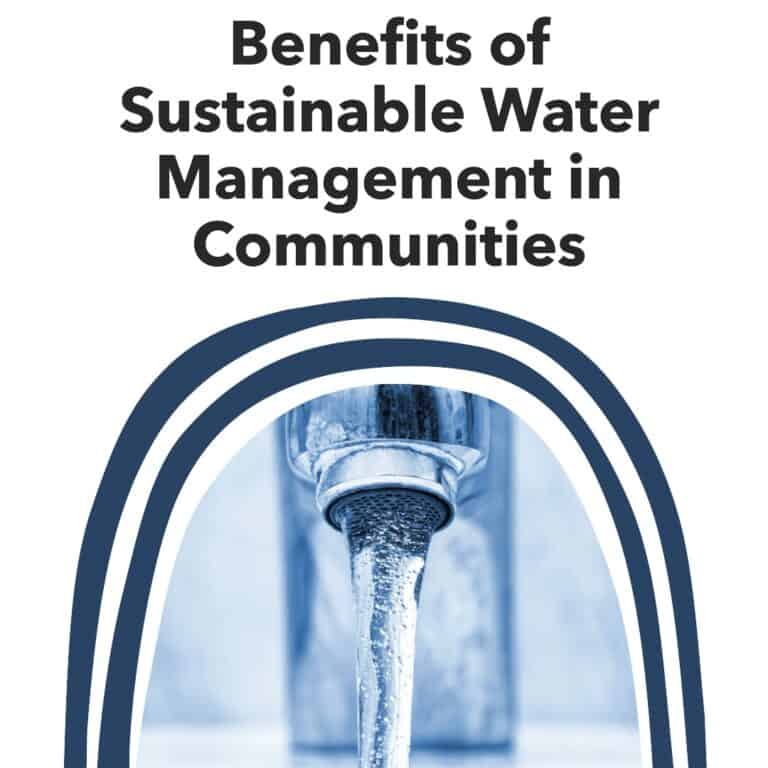Waste-To-Energy, often abbreviated as WTE, is a revolutionary approach that marries environmental concerns with our energy needs.
In a world dealing with the dual challenges of energy scarcity and excessive waste, Waste-To-Energy presents a solution that hits two birds with one stone.
But, like every coin has two sides, this green innovation comes with its own set of pros and cons. Let’s dive right in, shall we?
Waste-To-Energy – The Numerous Pros and Cons

Waste-To-Energy is essentially a process that involves converting non-recyclable waste into usable forms of energy like electricity, heat, or fuel. The magic lies in the process itself, where waste undergoes several transformations to end up as a sustainable source of energy.
The process predominantly relies on thermal technologies, such as incineration, pyrolysis, or gasification. These techniques break down the waste materials at high temperatures, producing a gas that can subsequently be used to generate electricity.
Historically, we’ve relied on open burning, a rudimentary form of WTE. However, modern-day WTE technologies are leaps and bounds ahead, offering efficient energy generation with lower environmental impacts.
Pros of Waste-To-Energy
In today’s world, where both energy demands and environmental concerns are skyrocketing, the intersection of waste management and energy production is nothing short of a boon.
Waste-To-Energy (WTE) comes with a myriad of benefits that can drastically reshape our perspective on waste and its potential.
Here’s an in-depth look at some of its major advantages:
Environmental Advantages
- Reduced Greenhouse Gas Emissions: One of the most commendable advantages of WTE is its role in curbing greenhouse gas emissions. Landfills, a traditional method of waste disposal, release methane – a potent greenhouse gas. When waste is converted to energy, methane production is substantially reduced. Moreover, by producing energy from waste, we decrease our dependence on fossil fuels, thereby further reducing CO2 emissions.
- Conservation of Natural Resources: Every bit of energy produced from waste is energy that doesn’t need to be produced from primary resources. This means less mining, less drilling, and a significant reduction in the exploitation of our already dwindling natural resources.
- Decreased Pollution: Modern WTE plants are designed with state-of-the-art pollution control mechanisms. This means they operate under strict guidelines to limit the release of pollutants, ensuring that the air remains cleaner.
Economic Impacts
- Local Job Creation: The establishment of a WTE facility offers a boost to the local economy. From construction roles to operational and administrative jobs, there’s a wide spectrum of employment opportunities that arise.
- Revenue Generation: Beyond job creation, these plants can turn a profit by selling the energy produced. Local municipalities can also benefit financially by charging for waste disposal and then converting that waste into sellable energy.
- Stability in Energy Prices: Unlike fossil fuels, which are subject to market fluctuations and can be quite volatile in pricing, waste is a steady and predictable source, leading to more stable energy prices.
Reduction of Landfill Dependency
- Maximizing Land Use: Every ton of waste converted to energy is a ton less that goes to a landfill. This not only conserves land but also circumvents many environmental issues associated with landfills, like groundwater contamination and habitat destruction.
- Extended Landfill Lifespan: For places that still need to use landfills, integrating WTE means these sites last longer as they receive substantially less waste. This is crucial in regions where finding new landfill sites is challenging due to geographical or regulatory reasons.
Contribution to Renewable Energy
- A Sustainable Energy Source: While not always immediately apparent, WTE is indeed a form of renewable energy. Waste is continually produced as long as humans exist. By tapping into this ever-present resource, we’re ensuring a consistent energy flow.
- Diversification of Energy Portfolio: Relying on a single energy source is risky. By adding WTE to the mix, regions can diversify their energy sources, ensuring that there’s always power, even when other sources might be running low.
Job Creation and Community Development
- Educational Opportunities: Many WTE facilities double as educational centers, offering tours and interactive sessions for students and the public. This serves as a means to raise awareness about waste management and sustainable energy.
- Community Upliftment: Often, the communities surrounding WTE facilities benefit from improved infrastructure. Whether it’s better roads for waste transport or improved public facilities funded by the revenue from the plant, the positive ripple effect is undeniable.
The benefits of Waste-To-Energy stretch far and wide. From profound environmental impacts to significant economic advantages and community development, WTE stands as one of the most promising solutions to modern challenges.
Cons of Waste-To-Energy
While the merits of Waste-To-Energy (WTE) technologies are undeniably impressive, it’s important to look at the challenges and drawbacks as well.
For a well-rounded perspective on WTE, you must be informed about the potential pitfalls and obstacles associated with its implementation and operation.
Let’s dive into some of these concerns:
Environmental Concerns
- Air Pollutants: Despite advancements in pollution control technology, WTE plants can still emit certain pollutants. The burning of waste can release dioxins, furans, and heavy metals into the atmosphere, which can be harmful to both the environment and human health.
- Toxic Ash Production: The combustion process in WTE plants generates ash as a byproduct. This ash, especially the fly ash, can contain heavy metals and other toxic substances. Managing and disposing of this ash in an environmentally friendly manner is a challenge.
- Carbon Footprint: Although WTE plants reduce methane emissions compared to landfills, the burning of non-biodegradable waste like plastics can lead to significant CO2 emissions.
Economic Impediments
- High Initial Costs: Setting up a WTE facility requires a significant capital investment, especially for state-of-the-art plants with advanced pollution control measures. This can be a deterrent for many municipalities or private entities considering WTE.
- Long-term Viability: With advancements in recycling and waste reduction technologies, there could be less waste to convert to energy in the future. The potential reduction in waste feedstock raises questions about the long-term economic viability of some WTE plants.
Technical Challenges
- Waste Composition Variability: The energy content of waste can vary significantly depending on its source and composition. This inconsistency can affect the efficiency of energy generation and make plant operations more complex.
- Integration with Recycling: There’s a concern that WTE might compete with recycling efforts. If waste becomes a valued energy commodity, there might be less incentive to recycle materials, particularly those with high calorific value.
Public Perception and Social Issues
- NIMBY (Not In My Backyard): Many communities resist the establishment of WTE facilities in their vicinity due to concerns about pollution, traffic, and the potential impact on property values.
- Awareness and Education: Misconceptions about WTE can lead to public opposition. Many people are unaware of the modern pollution control technologies used in WTE plants and fear the worst, making community engagement and education critical.
Regulatory and Policy Hurdles
- Stringent Regulations: Complying with environmental regulations can be challenging, especially in countries with strict air and water quality standards. This can lead to increased operational costs.
- Lack of Incentives: In some regions, renewable energy sources like wind or solar might receive more substantial subsidies or incentives than WTE. The lack of equal footing can stymie the growth and adoption of WTE technologies.
- Waste Import/Export Restrictions: Some regions might face challenges in sourcing waste due to regulations on the transboundary movement of waste. This can affect the consistent operation of WTE facilities.
So while Waste-To-Energy presents an innovative solution to the intertwined challenges of waste management and energy production, it’s not without its set of challenges.
Addressing these drawbacks requires a careful approach, combining technological innovation, sound policy-making, and community engagement. Only then can WTE truly realize its potential in the sustainable energy landscape.

I’m Thomas, the owner of SustainableWave. Passionately promoting a sustainable planet. With experience in various eco-roles, I’ll share green tips, sustainability hacks, and personal eco-journeys on my blog.






